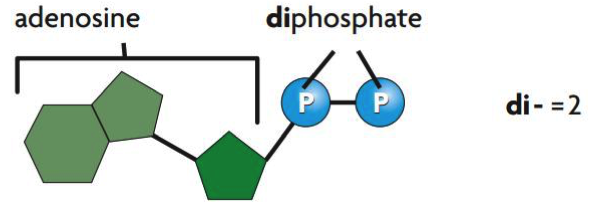
ADP is the abbreviation of adenosine diphosphate, which is an important organic compound needed to the flow of energy in living cells. A sugar backbone which is attached to a molecule of adenine and two phosphate groups which are bonded to the 5 carbon atom of ribose are the three important structural components of a molecule of ADP. The sugar backbone of ADP consists of five carbon molecules and also known as five carbon molecules. The 5’ carbon of the sugar backbone is added by the two phosphate groups of ADP and the 1’ carbon is attached by the adenosine molecule.
Scientists at Creative Proteomics utilize a highly quantitative method with high-performance liquid chromatography (HPLC) for the determination of ADP levels in various samples, including Animals, Plants, Microorganisms, Cells and more. High-Performance Liquid Chromatography (HPLC) with UV detection is used for the determination of ADP (254 nm) levels in a lot of biological samples. This Methodology provides accurate, reliable, and reproducible results of ADP measurement, which enables us to analyze of ADP levels in vitro and in vivo.
ADP-ATP cycling is an important way to supply the energy needed in all living organisms. Potential energy and kinetic energy are the two different types of the energy needed to do work in a biological system. The potential energy stored within the phosphate bonds of the ATP can be transferred to do work and the ability to store potential energy is the significance of ATP. Breaking one of ATP’s phosphorus bonds generates energy and ATP is converted into ADP via aerobic respiration in the mitochondria. Photosynthetic pathways of plants can convert ADP to ATP and store energy from sunlight.
The Russian-Polish botanist M. Tswett is generally recognized as the first person to establish the principles of chromatography. In a paper he presented in 1906, Tswett described how he filled a glass tube with chalk powder (CaCO3) and, by allowing an ether solution of chlorophyll to flow through the chalk, separated the chlorophyll into layers of different colors. He called this technique “chromatography”. Fundamentally, chromatography is a technique used to separate the components contained in a sample. High Performance Liquid Chromatography (HPLC) is a method able to separate non-volatile, thermally unstable, and polar components separate or in a mixture. HPLC is a type of chromatography that, because of its wide application range and quantitative accuracy, is regarded as an indispensable analytical technique, particularly in the field of organic chemistry. It is also widely used as a preparation technique for the isolation and purification of target components contained in mixtures.
ADP Analysis Service at Creative Proteomics supports your research in ADP Analysis. HPLC Based Analysis Service Platform enable us at Creative Proteomics offers you a state-of-the-art Analysis Service.
Sample Type
Animals, Plants, Microorganisms, Cells and more
Method
High-Performance Liquid Chromatography (HPLC) with UV detection is used for the determination of ADP (254 nm) levels in a lot of biological samples. This Methodology provides accurate, reliable, and reproducible results of ADP measurement, which enables us to analyze of ADP levels in vitro and in vivo.
Send us your samples, you will get all information that you need!







